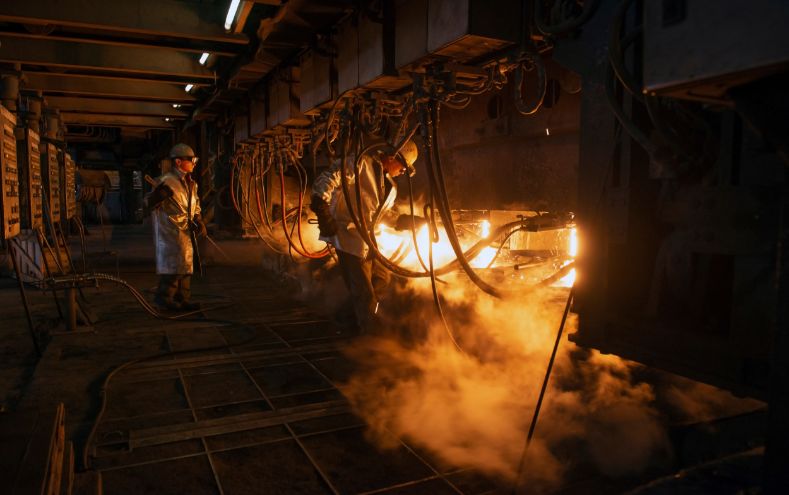
5 pitfalls for metals companies implementing S&OP
Steven Depue - May 11, 2022

Are metals companies giving enough attention to long-term tactical planning? It’s not a general rule, but many metals companies are so preoccupied with getting their operations straight that they tend to neglect planning for what could happen a few months ahead. Which is a pity, because long-term sales and operations planning (S&OP) could allow them to proactively address the kind of disruption we have been experiencing lately.
Yet, a significant number of metals companies that have already set up an S&OP process are somewhat dissatisfied with the results. How come? Here are five pitfalls I’ve seen metals companies run into when they deploy S&OP.
1. Lack of ownership by executive management
Blog post

Executive management in the metals industry tend to focus more on operational issues than long-term planning, attaching limited importance to creating scenarios and long-term plans. And their tactical planning teams can be small.
One leader recently told me: “Historically, I have a big scheduling team with huge responsibilities but only a small long-term planning team. I’m trying to shift the balance, but it’s difficult to persuade senior management.”
This lack of ownership by executive management means that S&OP programs are insufficiently aligned with company strategy, which is a recipe for failure. It is essential that the executive level define what the S&OP program should achieve, and in sufficient detail. And then support the S&OP process enough to keep it alive.
Blog post
2. False expectations lead to disappointment
An obsession with ‘orders’ — the word — pervades the metals industry. No wonder it features prominently in what people tell us they expect from an S&OP process. It comes down to three things:
- More accurate order promising dates;
- A clear overview of the status of each order;
- Allowing planners to take short-term action on orders.
While S&OP will improve performance in these areas, the bad news is that these are false expectations. S&OP is about maintaining and updating quotas to avoid overpromising on groups of products, types of customers, or individual customers. This doesn’t mean that order backlogs should be disregarded in the plan: if you have a deep order book you can make a much more accurate forecast.
But S&OP is not designed to manage backlogs or fight old fires. S&OP is about stopping backlogs developing and planning proactively. It is designed for decision-making, allowing you to optimize your product mix to maximize asset utilization, reduce costs, increase margins, and reduce carbon footprint, to give just a few examples.
3. Confounding process input and output
Some metals companies using S&OP tend to confound input and output. To get a handle on this, you have to understand that S&OP works with the following data as input:
- An unconstrained demand signal, roughly meaning “the volume of potential orders out there waiting for us to take if we didn’t have any constraints”;
- Current and future constraints and capacities dictated by the production model;
- The available inventory of raw materials, process stock, and finished goods.
It provides the following outputs:
- A constrained sales plan, roughly meaning “the type of products we want to produce and deliver for the (type of) customers we want to serve”;
- A corresponding production plan with asset utilization;
- A corresponding inventory plan.
Blog post
But when following every stage of an S&OP cycle in a metals company — from preparation to executive decision-making — we often see that some of these supposed outputs have already been imposed from above. There’s also some confusion about what the exact outputs should be.
The organization may have already decided to run at full load for the next three months. Planners then feed the S&OP process with this gut feeling of being fully booked, regardless of the actual demand signal, thereby risking producing goods for which there’s no demand.
Similarly, many commercial organizations in the metals business apply rule-of-thumb supply constraints when making a demand signal, without having it reviewed by the supply organization responsible. In S&OP, it’s essential to use a truly unconstrained forecast as input, because this means the organization can then make decisions aligned with company strategy.

Blog post
4. S&OP decisions are insufficiently operationalized
The operational organizations of metals companies tend to be rather skeptical of S&OP, perceiving it as of limited importance for them. And, for many there’s a reluctance to even accept certain formal S&OP outcomes, not just in production organization but also in logistics, procurement, and sales. As a result, S&OP decisions are insufficiently operationalized by these internal customers and not shared much with the wider organization.
It is therefore very important to raise perceptions of S&OP’s value across the entire organization. As this Gartner article outlines, supply chain leaders should demonstrate how S&OP can contribute to growing revenue, enhancing profit, improving customer service, and reducing costs and carbon emissions. The emphasis should be on how this process aligns all stakeholders and participants with common objectives. Most importantly, appropriate KPIs should be put in place, paying sufficient attention to linking business metrics with operational metrics so that planning is at a level of detail that can steer operations.
5. Too much detail makes S&OP unmanageable
Blog post

Another form of resistance to S&OP is due to the inherently imprecise nature of mid- and long-term planning. Many of the smartest people working in the metals industry — engineers, metallurgists, production experts, operations experts — have a natural orientation toward detail and struggle with the fact that forecasts are always inexact and that S&OP scenarios and plans operate on an aggregated level.
Sadly, on a longer horizon, it is impractical and even impossible to plan on an overly detailed level. It would be unmanageable and the results would be extremely inaccurate (and therefore even less acceptable to the rest of the organization).
Blog post
Implementing S&OP is a process of finding the right balance between exactitude and manageability. We always recommend companies look at their big decisions: where they purchase raw materials, which (type of) customers to serve (primarily), and where to avoid production bottlenecks. The answers to these questions provide the prime building blocks of a solid S&OP system. Then it can gradually extend to the level of detail that best matches the production apparatus, market landscape, and strategy.
Any of these pitfalls sound familiar? Reach out to me to find out how we can improve your KPIs by implementing S&OP.
Want to learn more about deploying S&OP in the metals industry? In our ‘S&OP in Metals’ e-book, we offer recommendations about how to run a more effective S&OP process, based on experience in recent projects.

Steven Depue
Advisory Manager at OMP BE
Biography
With a background in management consulting and technology implementations, Steven delivers strategic and operational planning advice and customized solutions to meet the supply chain challenges faced by customers worldwide.





